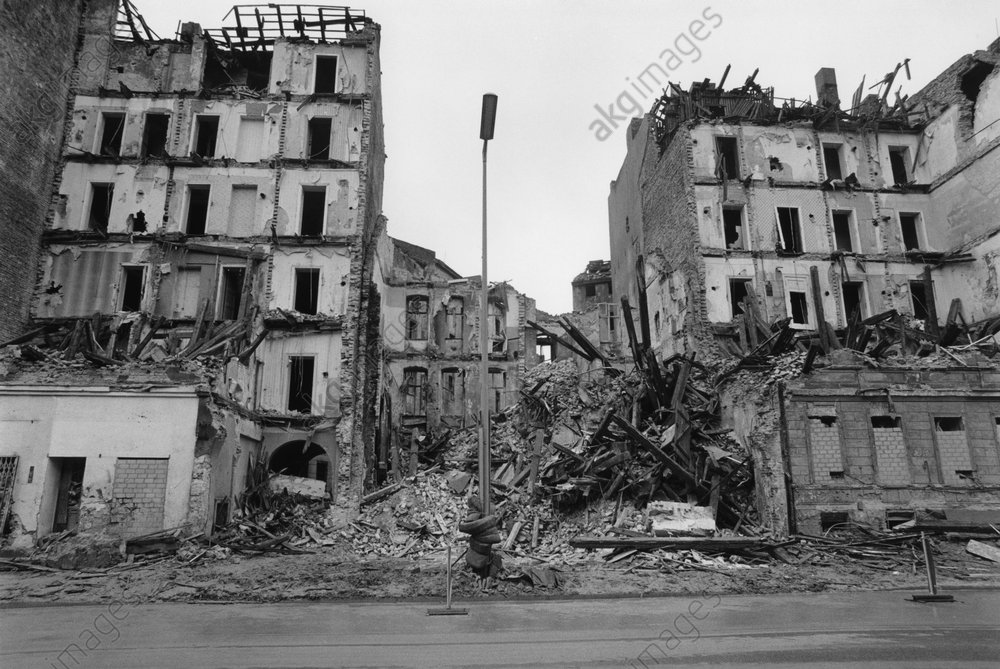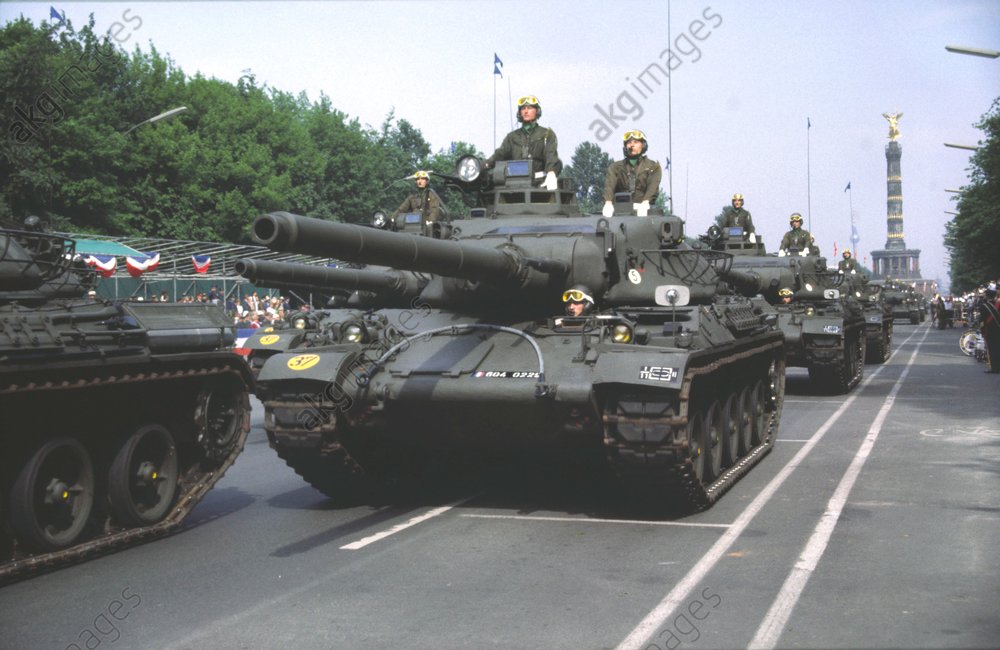Surrounded by the Wall: Memories of a childhood in West Berlin (Part II)
Click here to read part one of Volkmar’s description of life in West Berlin before reunification.
Volkmar has also hand-picked a selection of images to illustrate these posts which can be seen on the akg-images website.

In 1989, the requirements for entry into the GDR were relaxed. West Berliners were no longer required to apply for a visa, they only had to fill out a small slip of paper on their entry into East Berlin which they handed over to the respective guards at the border crossing. Somehow the rumour spread that this slip of paper was immediately thrown in the bin, which was quite conceivable at that time of change, and even in the so-called “Tränenpalast”, the “Palace of Tears”, people were just waved through without any further checks. Then the Berlin Wall fell completely. I climbed onto empty watchtowers, up and onto the roof, unfortunately again without a camera, still unaware at 15 of the historical significance of what was happening.
I had planned to unscrew signs like “You are now leaving West Berlin” or “End of the American Sector” (the Americans occupied the south, where I lived, in the middle were the British, the French were in the north) but other people had gotten there before me. At the flea markets and at the Brandenburg Gate you could buy medals, Communist party badges, gun bags, all sorts of uniforms , Soviet night vision devices, bayonets you could cut fences with, and for the most part these were all new and unused. Those with the right contacts could get even more.
We explored the abandoned training grounds of the National People’s Army, there were still a few vehicles, empty and vandalised, barracks looted and sometimes set on fire, deserted command posts. A year earlier, it would have been unthinkable to visit many of these places. Somewhere there are photos, or perhaps even VHS videos, of them. Trabant and Wartburg cars abandoned on the roadsides, in the woods, everywhere… Interestingly you could find the tank traps hidden next to the training ground. These traps prevented anyone from driving onto the Autobahn and heading to Berlin-Wannsee two or three miles away, a possible route for escape attempts by East German military personnel.

When the Americans eventually withdrew, it was a strange feeling which some of us liked and some of us didn’t. On television, depending on the viewpoint of the reporter, the USA would be referred to either as the “Protective Forces”, the “Victors” or the “Occupying Powers”. For the older generation there were the Occupiers, but for me the Americans were part of West Berlin. They were a constant, and suddenly the barracks stood empty, the ammunition bunkers in the Grunewald filled in and planted over, the listening stations on the Teufelsberg and in the Marienfelde suddenly no longer restricted areas but abandoned half-ruins, where we of course went looking for interesting things to salvage but finding hardly anything worth taking. There was an unknown, windowless building and we had just one torch, outside it was dark, the security guard could come at any time. Today, a “No Trespassing” sign would be enough to keep me away, but back then it just fired my curiosity. Just as we got back outside, the security guard arrived. Berlin’s exciting moment at the centre of the Cold War was finished, and that only really became apparent once it was all over. I was born in 1975 so I missed the building the Wall itself in the 1960s when the Cold War suddenly threatened to get very hot, and the tanks along the border and in the middle of the city aimed their gun barrels at each other. Likewise, the Berlin Airlift in 1948-49 was history. My West Berlin of the 1970s and early 1980s was peaceful and quite tranquil. The tanks in the Grunewald practised with blanks, it was unimaginable to me that it would ever come to a sudden emergency, there was a balance of mutual threat that would not tip over. In any case there was no indication of anything different and no one was seriously worried.
After reunification, the new identity cards bore the German Federal Eagle and no longer looked “makeshift”, at the border crossings you could drive through without any checks and it was the same on the S-Bahn trains into Berlin-Mitte. Everything still looked like the GDR, but now with tons of new billboards and campaign posters, no checkpoints or restricted zones. Even today, you’ll still find some Communist-era road signs in East Berlin, as well as old licence plates and streetlamps, although most of them have been changed, traces can still be seen everywhere, if you know what to look for.

In the absence of a revised curriculum, schools continued to teach the differences between the political systems in East and West Germany. With the reunification came the end of childhood, as a young person I now explored the abandoned portion of the Dreilinden Autobahn and disused railway stations in the region.
Today, everything is just as interesting as before but I am no longer investigating barracks that have been vacant for 20 years in semi-darkness. What wasn’t torn down has now been converted into apartments, most of the S-Bahn lines have been modernised and are up and running again. You can book tours into Berlin’s underworld, or to the “Lost Places” as they are called today. You can travel on historic buses which used to ferry us to school. And when I see films from the 1970s and 1980s that were set in Berlin I think: It’s not quite as good as it is in my memory… but it’s still good!